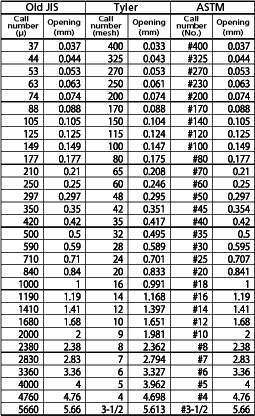 |
 |
 |
 |
|
|
A stone mill is a tool made of stone which is used to grind materials such as wheat and other grains, as well as plants and minerals, into powder.
There are two types: hand mills and mortars.
Note: Our products use a hand mill type system. |
 |
 |
|
|
Abrasive grains are hard grains or powders which are used to grind down other materials. They are also called abrasives and abraidants.
Note: Our products use milling stones (grinders). |
 |
 |
|
|
Milling stones are tools for cutting and polishing materials such as metals and rock, and they can be used to precisely grind any kind of metal or non-metal material when selected appropriately based on factors such as granulation (roughness of raw materials), coupling (the strength of connections within the raw materials), construction (the density of the raw materials), and binders (the material that hardens raw material powders).
Note: Our milling stones (grinders) are manufactured based on this theory. |
 |
 |
|
|
Wet type refers to processing in a wet state. Dry type refers to processing in a dry state.
Note: For dry grinding, the ratio of moisture and oil contained in the raw material should be less than 5%.
(Dry processing is possible as long as this ratio is under 10%.) |
 |
 |
|
|
Cracking refers to separating or unraveling clumps of material. |
 |
 |
 |
 |
Grain size classification |
Particle classification refers to sorting particles of varying sizes into groups using processes such as granulation. |
 |
 |
|
|
Coarse grinding refers to grinding materials into a coarse paste. |
 |
 |
|
|
Emulsification refers to the process of creating an emulsion of two separated liquids. Compounds which have this effect are called emulsifiers.
An emulsion is a dispersion solution in which both the solute and the solvent are liquids.
Also known as a suspension liquid.
Common examples include wood glue, acrylic paint, and mayonnaise. |
 |
 |
|
|
Fibrillation refers to the process which causes fibrils (small fibers) inside of fibrous materials to appear on the surface due to friction, turning fluffy and frayed. |
 |
 |
|
|
Atomization refers to grinding into extremely fine particles. |
 |
 |
|
|
aste refers to ground materials such as meat, organs, and vegetables. |
 |
 |
|
|
Slurry refers to a suspension liquid of fine solid particles suspended in water or a mixture of solids and liquids. |
 |
 |
 |
 |
|
|
Poreless refers to the state of not having pores. Pores are small cavities contained within an object. They are also called voids.
Multi-pore is the opposite of poreless, referring to the state of having many pores. |
 |
 |
|
|
Microns are a unit of length equal to one millionth of a meter. The term micrometer is also used for the same unit of length.
Currently, micrometer (symbol: µm) is the standard unit used in the international system (SI) for length. It can be written as either µm or um.
Note: 1mm = 1000µm, 100µm = 0.1mm |
 |
 |
|
|
Granulation refers to the ratio of the size of particles that make up powders and other materials. |
 |
 |
|
|
Mesh refers to materials such as netting and woven fabrics, as well as cloth, resin, and metal items with a porous mesh structure.
These units were originally for sifters and said to be used only in Japan.
These sieve numbers show the particle size, and the units indicate the number of pores per inch.
10 mesh means there are 10 pores per inch, indicating a coarser sieve than a 100 mesh (which has 100 pores per inch).
|
 |
 |
| |
| |
 |
 |


